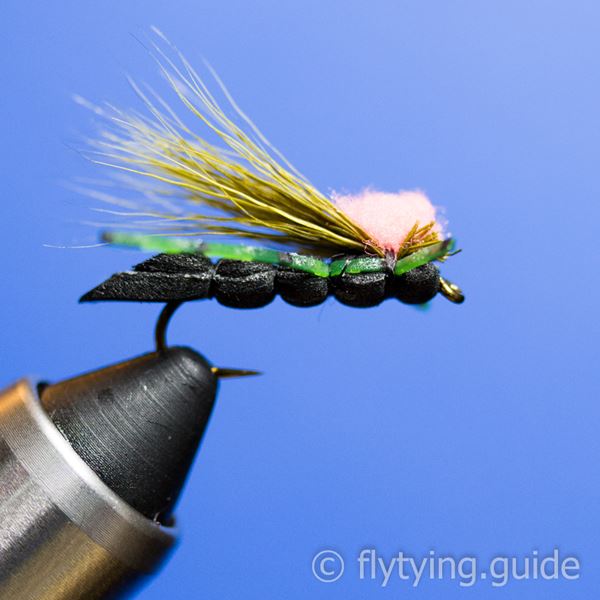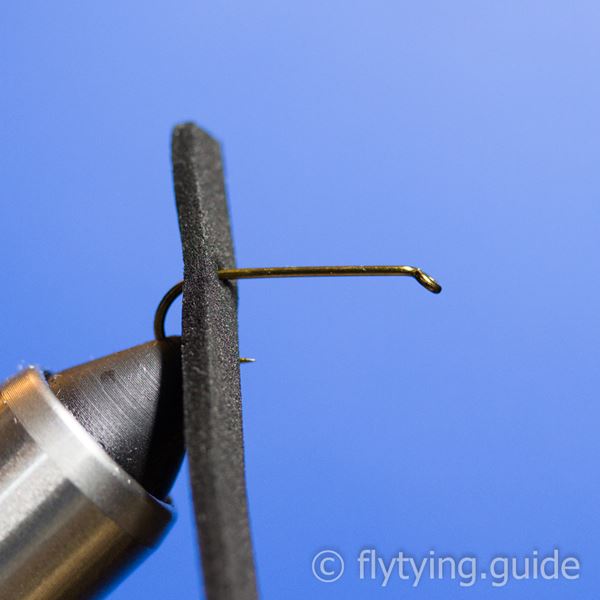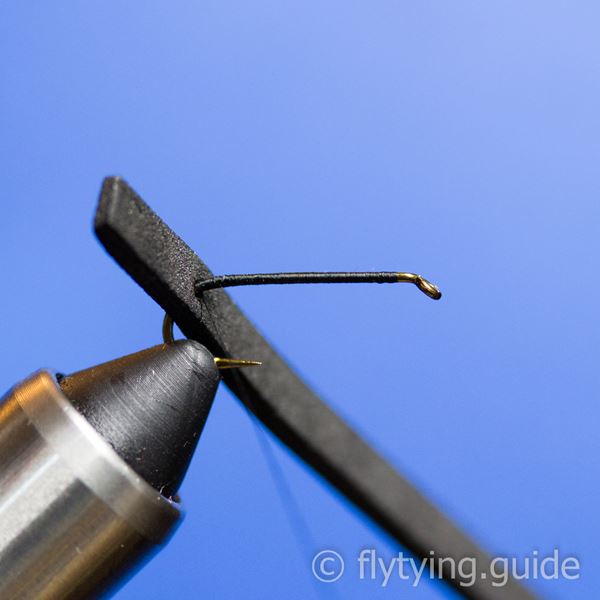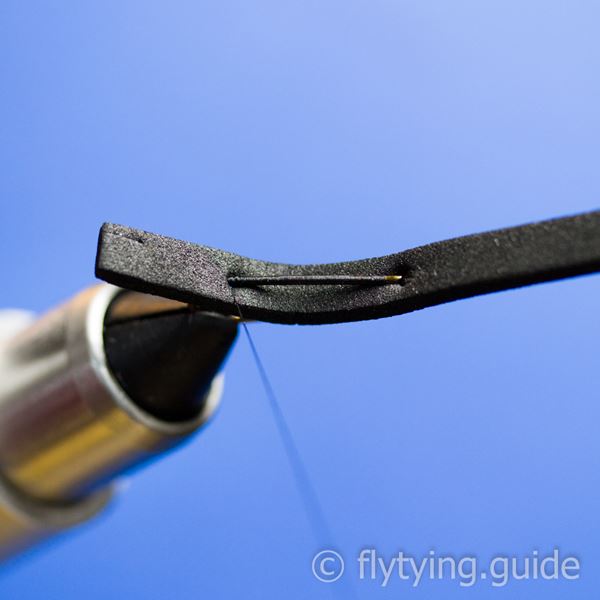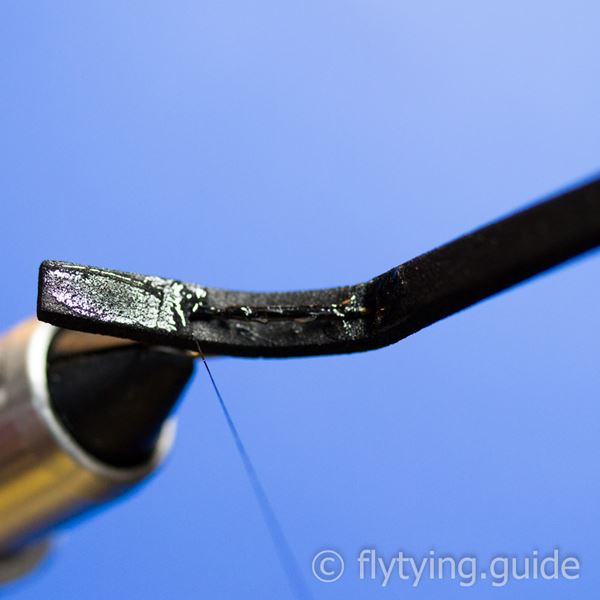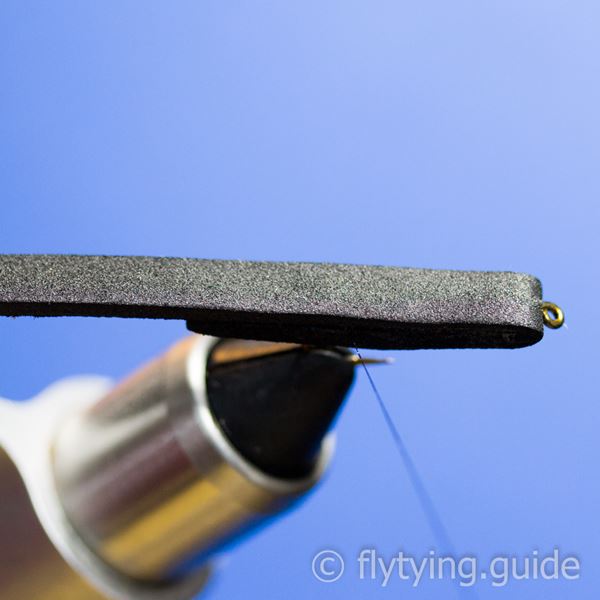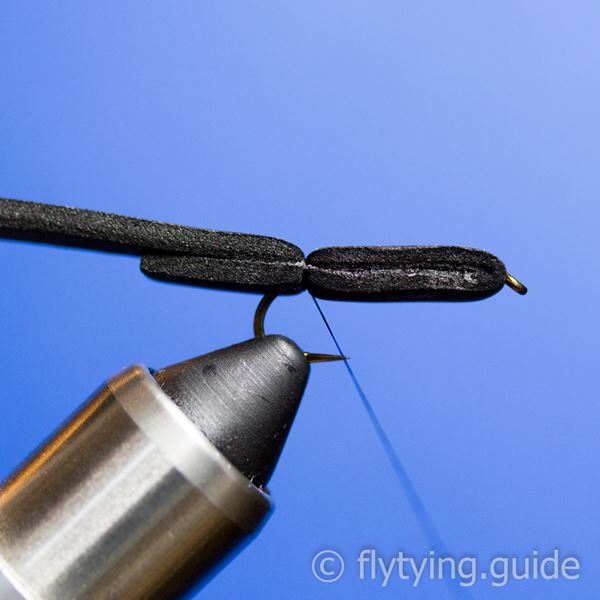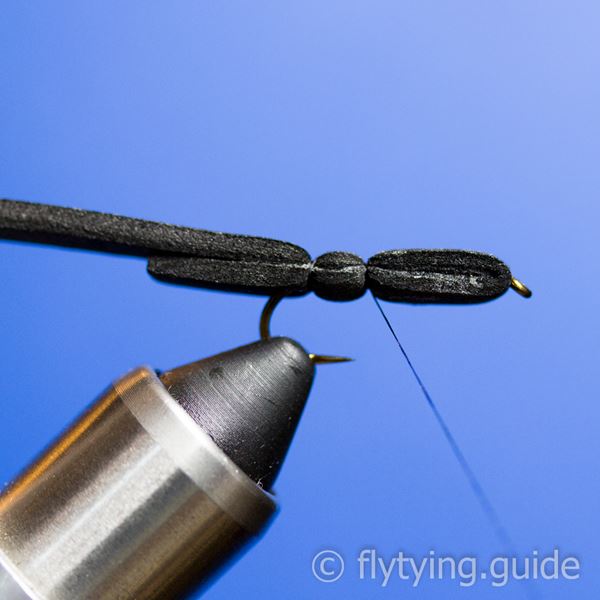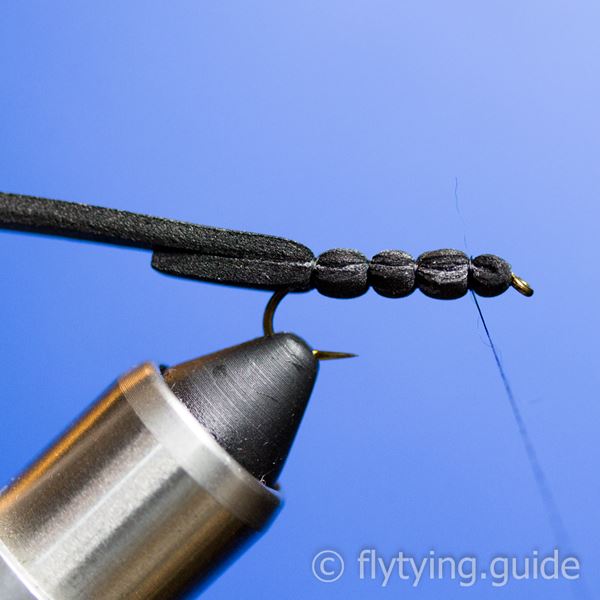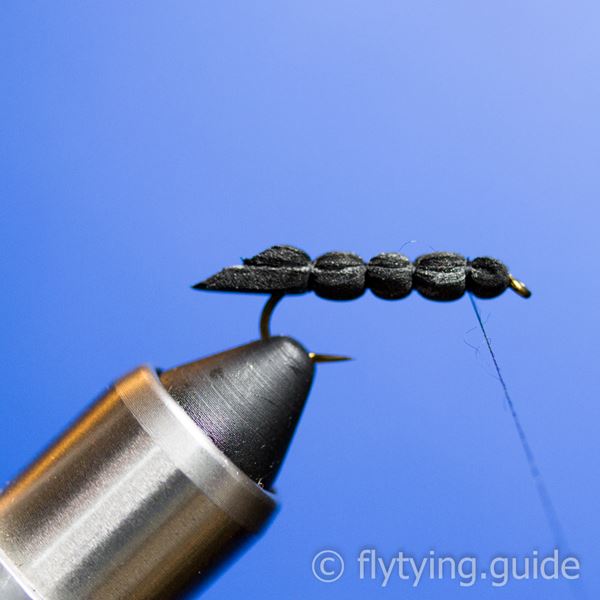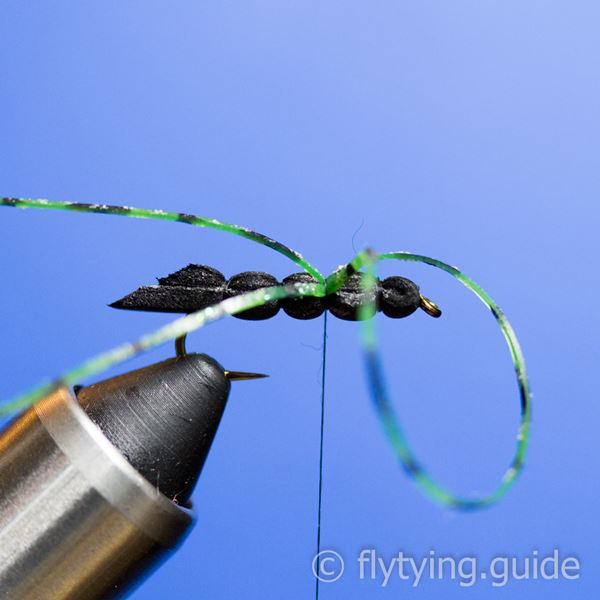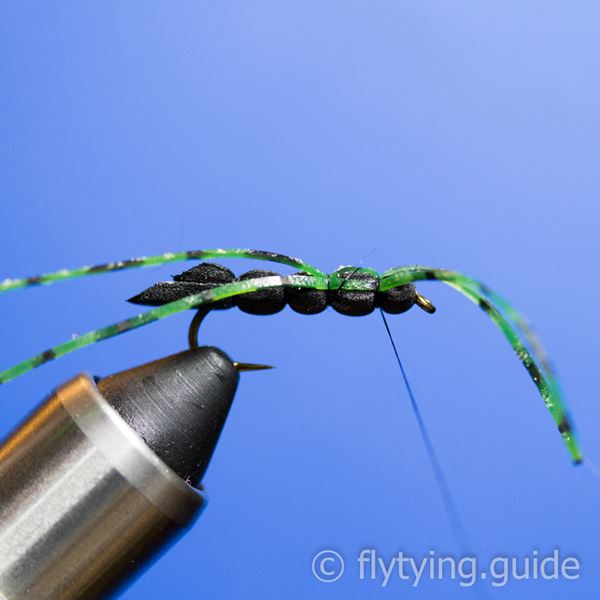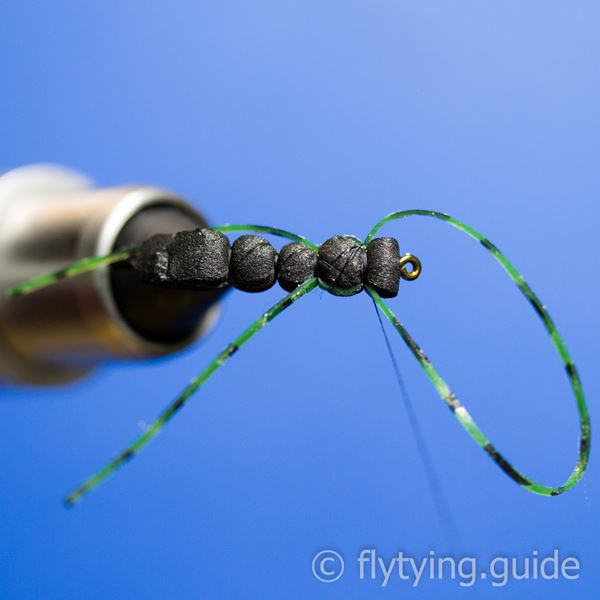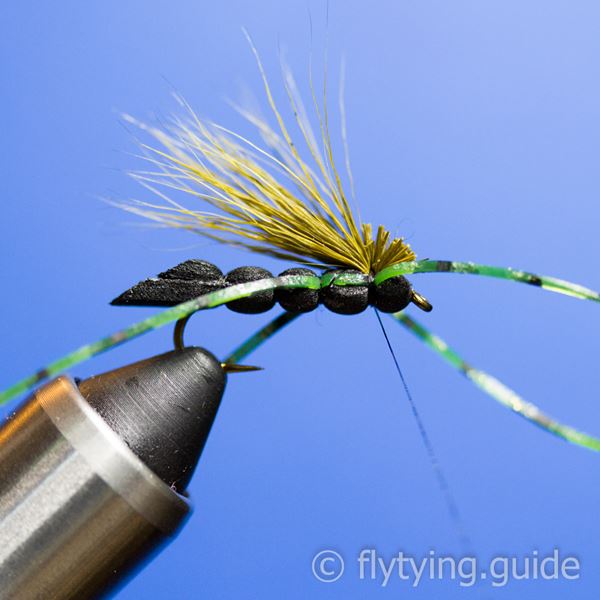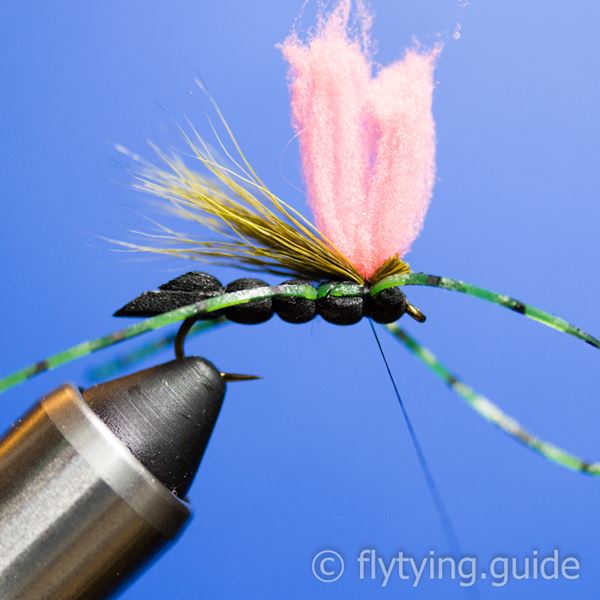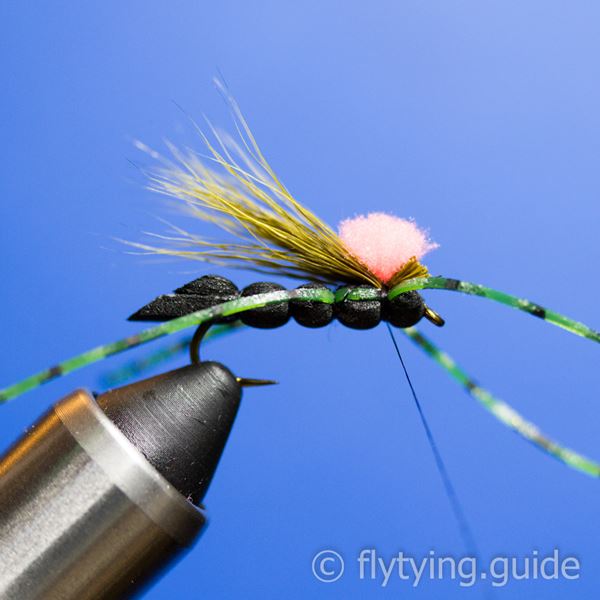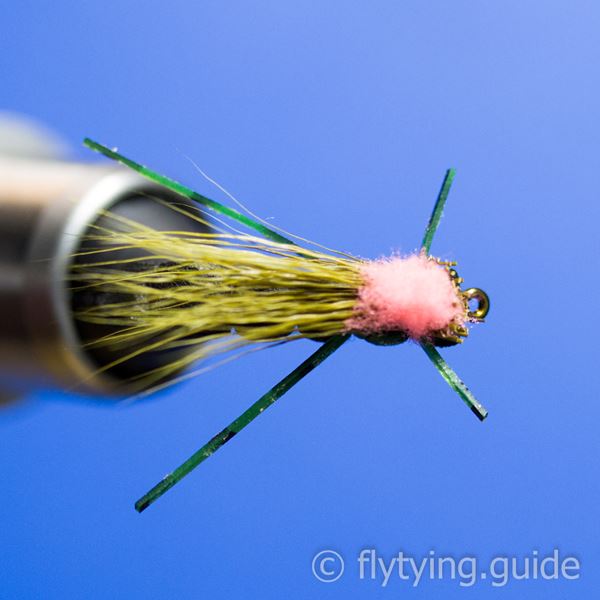Foam Cricket
Made with a combination of synthetic and natural materials, this terrestrial pattern works great on a summer day when the wind is blowing and crickets or other large insects are being blown into the water. Consisting of a foam body and a deer hair wing, this fly will have no trouble staying afloat all day long.
- Source: Tightline Productions
- Submitted By: Fly Tying Guide
Materials
13
Prepare a pinch of deer hair by stacking it to align the ends, remove from the stacker and measure it so that it will be the same length as the body. Trim and tie in at the first segment to create a hair wing. Taking wraps through the ends of the hair after the first couple will help lock it in place.
14
Prepare a short length of egg yarn to use as an indicator, antron yarn or any high visibility material can be used for this. Secure the material with one or two tight wraps, and then apply a whip finish, position the thread on the underside of the fly and snip it. Apply a small amount of head cement to the underside of the first segment.
